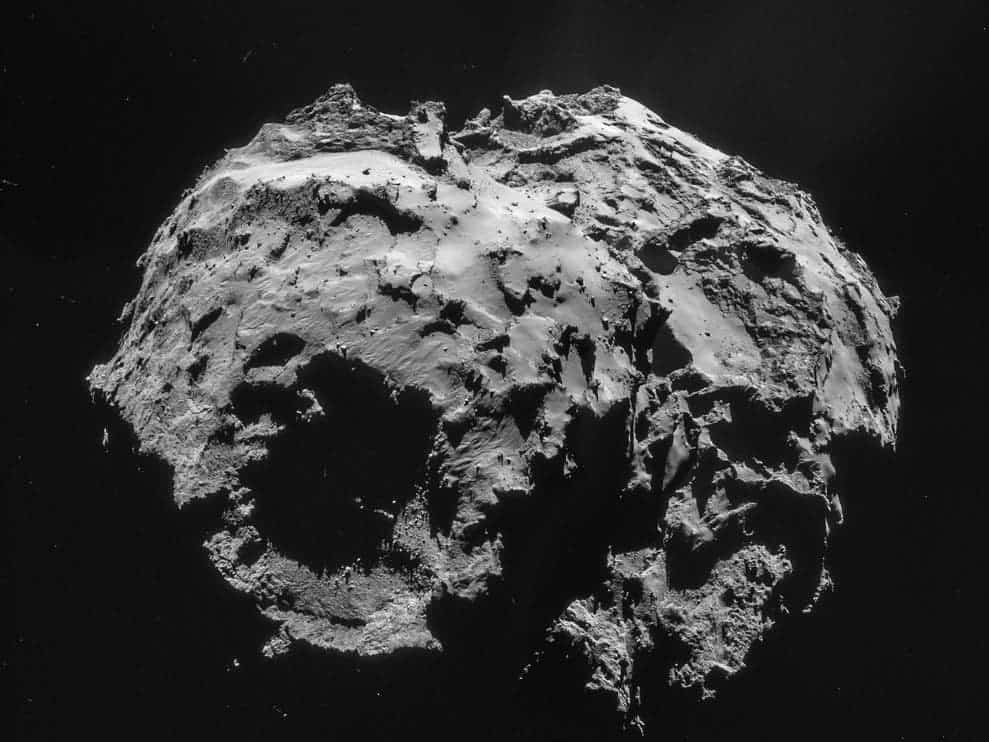As you might remember, a few days ago we were telling you about the fantastic success of the Rosetta mission – a spacecraft launched by the European Space Agency which orbited a comet and sent landed a probe on it. Now, we already have the first result: Earth’s water probably didn’t come from comets.

Did you ever ask yourself where did the Earth’s oceans come from? In its initial protoplanetary stage, the Earth was very hot so of course, there couldn’t be any water on its surface; so the water came at a later stage, but from where? Many researchers actually believe that Earth was “inseminated” with water from outer space – either from asteroids or comets. Now, a new chemical analysis based on data from the Rosetta mission shows that water almost certainly didn’t come from comets.
“We have to conclude… the terrestrial water was brought by asteroids more likely than comets,” said Kathrin Altwegg, principal investigator on the ROSINA mass spectrometer that has been examining the chemical fingerprint of water and other gases in the comet.
A comet is an icy small body from the Solar System, while asteroids are considered to be minor planets. There are certainly many similarities between comets and asteroids, but there are also significant differences. The first one is composition: while comets are made from ice, dust, some rocky materials and organic compounds, asteroids are rocky. For this reason, when they get closer to the sun, comets lose material, while asteroids typically remain solid.
Both asteroids and comets are remnants from the initial period of the solar system – you can consider them left over building blocks. So if you study them, you can get a glimpse of how the solar system looked in the past; not only that, but you can also see if the Earth’s water came from them or not. As it turns out, it didn’t come from comets, but that only makes things even more interesting,
“We found something different,” says Altwegg, and “more exciting.” She heads the team operating a spectrometer aboard Rosetta, which is circling in orbit some 14 miles (23 kilometers) above comet 67P.
With a spectrometer an instrument which measures spectral properties and can be used to identify materials and chemical compositions, researchers measured the amount of deuterium, a heavier isotope of hydrogen, found in the ice on the surface of the comet. This chemical make-up is significantly different from the one on Earth, so it means that the water here has another source. This leaves asteroids as the likely culprits, but raises even more questions about comets.
“It is a very exciting study that raises more questions than it answers,” says geophysicist Nicolas Dauphas of the University of Chicago, who was not part of the discovery team. “The mission is a tremendous success for space exploration and for science in Europe.”
However, some experts are not convinced, citing the low number of studied comets. Not all comets are the same, and different studies may yield different results.
“Each comet is different, and the question of their contribution to Earth’s atmosphere and oceans is still open,” Dauphas says.
The problem is even more complex – comets are indeed fewer than asteroids in our solar system (4,000 vs 650,000), but they contain water, while many asteroids don’t. Francis Rocard, a Rosetta scientist at the France’s National Center for Space Studies (CNES) also agrees that things seem even more complicated in the light of recent findings.
“To me, these findings do not shake things up but render them a bit more complex than we previously believed, all while reinforcing the hypothesis that asteroids are the source of Earth’s water,” he told AFP.
Results were published in Science.


